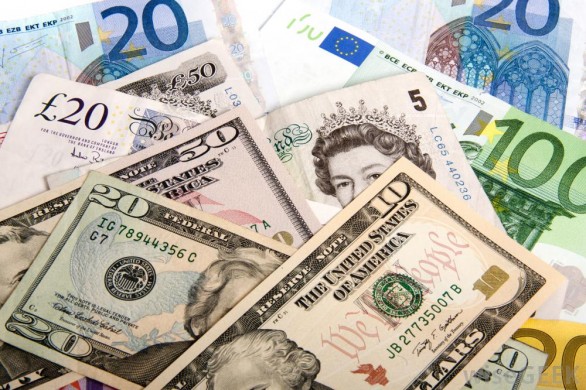
The following is an extract from my new eBook, Lessons From The Financial Markets For 2013 covering the Euro. This is a currency that was apparently doomed to fail from the start, then collapse in 2010, then 2011, then 2012. So a dead cert for 2013….!? Yes, even smart people have got this one wrong, at least for another year.
The Euro: Mission “Irreversible”
The Set Up
Perhaps the first thing to be said about the Euro is that for many commentators even being able to write about its price action over the past 12 months can be regarded as something of an achievement given the way that according to the Europhobes the single currency would/should have broken up in 2012, 2011, even 2010. But it is still here, and with it the dream of closer European integration in all its forms is just about being kept alive. Ironically, it would appear that due to the way that the common currency was set up, the lack of the Eurobond/properly coordinated economic policy, we are probably looking for gradually more intimate relationships between our continental cousins, arguable even more close than would have happened if the good old days before the credit crunch collapse in 2007 had continued.
A pet theory of mine (currently a minority of one theory) is that the credit crunch itself was a product of the Euro threatening to become the new world reserve currency, redirecting funds that would normally have supported US assets such as T bonds and US equities, and hence towards the latter part of the last decade led to the crunch that the United States exported around the developed world. Clearly, this is never likely to be a popular theory, especially in the US. That said, even if you buy the idea that the Euro was a victim of its own success, it seems like total madness to have launched the common currency without a common bond. But apparently the Germans prefer periodic cash handouts to southern European members and next to nothing on their Bunds rather than paying a little bit more than next to nothing on a Eurobond.
Lessons From The Markets For 2013 is available on Amazon.co.uk by CLICKING HERE
In this my belief is that they are incorrect in the sense that without the speculative shooting gallery of Italian, Greek, Spanish, Portuguese, and Irish bonds, a common European bond could have a proportionately cheaper rate than just the average of the individual members as they stand. Once again though, I admit that given the way the Germans/the ECB/the IMF managed to muddle through so long in avoiding what could be the ultimate cure for this disaster area, it really does seem that it is not going to happen. Indeed, money printing down to wheelbarrows sized wallets, or even debt forgiveness as was practised in ancient Rome at this time in the cycle, would appear to be more likely than a common bond.
But it was not all gloom and doom for the Euro in 2012. From July we were treated to the spectacle of a new hero for the financial markets – super Mario. Apparently in the cunning disguise of being just an ECB President, in Mario Draghi we were presented with someone with the foreign exchange trading skills of a George Soros combined with the poker playing talents of Stu Ungar (presumably without the attendant lifestyle.)
Payoff
While it may be the case that the US and its Fiscal Cliff eventually trump what has been happening in the Eurozone over the recent past, so far the Supreme Fudge Award goes to the EU in managing to delay the “inevitable” Eurozone breakup which my Eurosceptic/hating friends have been calling for the best part of three years as imminent, and which despite all the scares has so far not materialised. This is an example of what is obvious simply not happening, more obvious indeed than the asset bubble bursting in 2007-8, While 2013 may be the year, this issue of the Euro’s demise has gone on so long now that at the very least it is likely not to be the apocalyptic event previously billed if only in shock value.

 Hot Features
Hot Features












